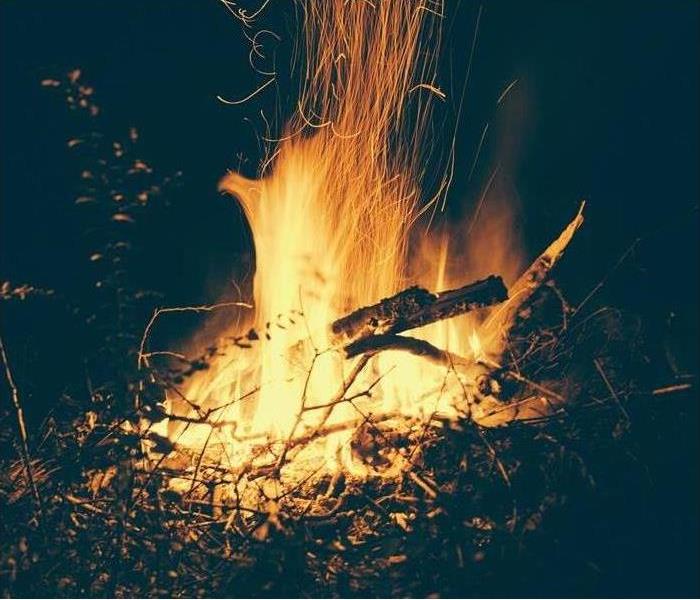Campfire Season Safety
10/22/2018 (Permalink)
With the temperatures drop we all are quick to start a campfire and begin to relax. However, anytime there is a fire, there is a risk of fire damage. With a campfire, the two primary concerns are falling into the fire and the fire escaping and burning the surrounding area. The good news is that there are a few simple things that can help you and your family to stay safe around the fire.
Before building a fire, you should make sure that it is safe and permissible to build the fire. Though there are a number of factors to consider, a general rule is that campfires should not be built when wind speeds are above 15 mph. Campfires are at lower risk of spreading when it is raining, the ground is wet or the temperature is low. In severely dry conditions, governmental authorities may ban all burning. A quick call to a park ranger, fire department or the police should help you to determine if there is a burning ban.
Tripping and falling into the fire is one of the most serious risks of a campfire, especially when children are present. Before building the fire, the area around the fire should be cleared of logs, large rocks and anything else that may cause a person to trip. Parents should closely watch children and forbid them from running or playing near the fire. A 10-foot circle around the fire should be cleared of any flammable objects, including vegetation. Fires should only be built in fire rings that are on level surfaces to decrease the chances of injury or the fire spreading.
It is important that you make certain that the campfire is fully extinguished before leaving the fire or going to sleep. Large chunks of wood will burn for a long period of time and should not be added to the fire late at night. When putting the fire out, you should knock the wood down flat on the ground. Water should be poured over the fire and the coals and wood turned on the wet ground to extinguish both sides. Only after the fire is cool to the touch is it safe to be left alone.
Whether it’s a campfire or a home furnace, a little bit of fire damage prevention can help to ensure a safe experience. However, the fire damage experts here at SERVPRO of WAYCROSS, Hinesville, and Douglas are ready to help if your home or other structure is damaged by fire.
Our Fire Damage Restoration Services
Since each smoke and fire damage situation is a little different, each one requires a unique solution tailored for the specific conditions. When various materials burn, the soot and residue they create differs greatly and requires a specific cleaning procedure. The steps listed below illustrate our process for the “typical” fire damage restoration. Learn more about our fire damage restoration process.
- Emergency Contact
- Inspection and Fire Damage Assessment
- Immediate Board-Up and Roof Tarp Service (if needed)
- Water Removal and Drying (if water damage is present)
- Removal of Smoke and Soot from All Surfaces
- Cleaning and Repair
- Restoration






 24/7 Emergency Service
24/7 Emergency Service
